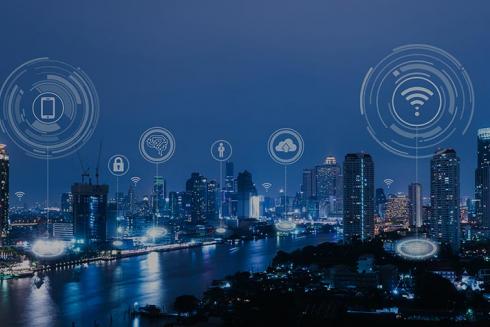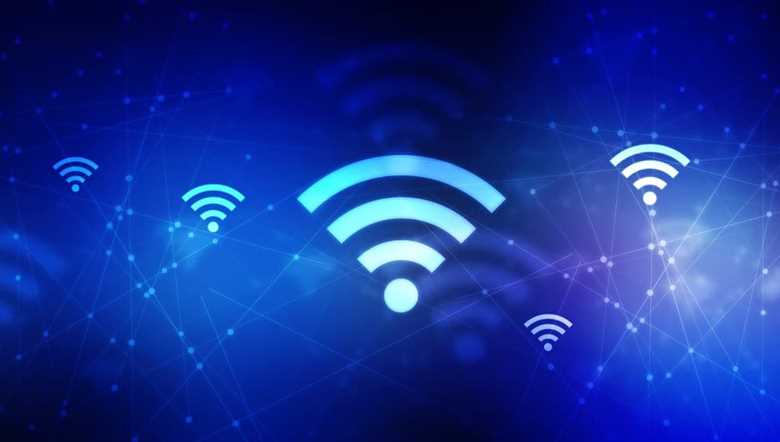5G and WiFi are two widely accepted wireless technologies of future networks. These two technologies can either be used separately or combined to improve network performance, especially in specific high load heavy-urban or even indoor environments or in industrial and automotive areas. 5G networks will provide higher speeds and may remove the WiFi bottleneck for top-quality user experience. On the other hand, WiFi technology may provide advanced connectivity since networks are now connecting more and more endpoints. This connectivity might be necessary, especially since 5G is still in the development phase and not widely implemented.
As the number of Internet devices will significantly increase in the coming years, businesses will need to consider how to connect all of these devices to existing networks. WiFi 6 has clear advantages from existing WiFi 4 and WiFi 5 technologies. WiFi 6 is faster, can handle higher device density, and uses less power than existing WiFi technologies. In short, it is very much like 5G, except that 5G, as a cellular data network, is provided by the mobile carrier.
Both technologies offer faster connections than their predecessors, along with the ability to support multiple devices at the same time. However, 5G will provide a more structured network to make communications and configuration more manageable. As 5G networks become more available, 5G could be a better choice as technology evolves with ultra-fast speeds and more hardware options. Mobile networks operating within the framework of rules and applying data encryption techniques would probably be safer. On the other hand, WiFi is cheaper since 5G providers will typically charge for data usage. Overall, both technologies could complement each other depending on network needs.
Mini cellular 5G base stations (5G small cells) multiply data capacity and put an end to WiFi bottlenecks in indoor hot zones such as a foyer, meeting areas, etc. 5G small cells are the first choice in new indoor wireless projects, to enhance existing enterprise building telecom infrastructure. A combination of 5G small cells and WiFi will boost network performance with seamless handover between public and enterprise 5G networks for better user experience.
Benefits of a 5G/WiFi converged network
Internet Speeds for the end-user can be boosted by combining the mobile 5G network with the available WiFi hotspots nearby (e. g. in public areas, restaurants, etc.). The system will automatically select the fastest available connection by switching seamlessly between WiFi and the mobile internet. If necessary, the system may combine 5G and WiFi connectivity to provide the required speeds and reliability. The combined network will improve the convenience of connecting to the internet by automatically selecting the connection with the strongest signal (by switching seamlessly between WiFi and mobile internet). Coverage can also be improved since the network may automatically connect to the available WiFi hotspot when the mobile network signal is weak. WiFi coverage will be gradually built up by operator hotspots and also by carefully selected 3rd party hotspots.
Network Security challenges
When accessing sensitive information through a smart device (for example, an online bank account), a cellular network is more secure than a public WiFi network. However, over the next decade, 5G will expand and also use WiFi networks, exposing more and more cellular users to security threats. In addition, the increase in devices connected to 5G will probably lead to a sharp increase in hackers seeking to exploit direct connectivity to the cellular network.
The reality is that mobile providers may not easily meet the bandwidth requirements of users, forcing them to accept the offloading of the WiFi network, more commonly referred to as Hotspot 2.0 or Passpoint. It works by seamlessly switching a cellular connection of a user device to WiFi each time it is within the range of an Access Point (AP) configured for Passpoint (this is most common in major cities, public transport areas, airports, and shopping malls). Cisco predicts that 71% of 5G traffic will be offloaded to WiFi networks, up from 59% of today’s 4G traffic. That’s the key to this issue since the majority of cellular data users will use a nearby WiFi hotspot for a long time without knowing it. This, of course, means their devices are possibly vulnerable to WiFi hacks.
Common WiFi security risks
Rogue Access Point (AP): Unauthorized APs that are physically connected to a network and should not be and allow hackers to bypass security. Rogue Client: Victim devices that have been linked to malicious APs and may be infected by malware payloads that try to spread to secure networks. Neighbor AP: Clients on private networks connected to neighboring SSIDs who run the risk of accidentally connecting to malicious APs and becoming infected. Ad-Hoc Links: Sharing files from user to user (AirDrop, for example). This is convenient, but anything that is shared this way, including infected files, will bypass security checks. The Evil Twin AP: An AP created by a hacker to mimic the SSID of a legitimate AP to steal the victim’s connection without ever noticing it. Properly configured AP: APs that do not comply with minimum network security standards, such as encryption settings. These expose the network to attacks.
Of the six threats, the Evil Twin AP is the most dangerous for 5G connections. Attackers mainly monitor and intercept man-in-the-middle traffic over a WiFi network and are always looking for easy ways to steal valuable information, such as user credentials.
Offloaded WiFi is technically supposed to be protected by business versions of the WPA2 or WPA3 security protocol. However, these two methods of encryption have recently suffered severe issues with the KRACK and Dragonblood vulnerabilities, which have shown fundamental weaknesses in system design (although business versions are considered a bit more secure). Also, new tools are being developed, and investigations are being made to deny this protection. Encryption is supposed to be the latest security solution for network connections.
5G vs WiFi in the automotive industry
There are two primary standards in the automotive business for interconnected cars. The one is based on the IEEE 802.11p WiFI standard, such as the Cooperative Intelligent Transport Systems (C-ITS) proposed by the EU and based on ETSI ITS-G5 vehicular communication system. The other is C-V2X (Cellular Vehicle to Everything), which is based on 5G networks and is currently under standardization and development.
Supporters of a WiFi solution argue that C-V2X technology still needs years to become viable. Most agree that C-V2X running on 5G networks will be the best technology, but they disagree about when it will be ready for widespread use.
This confrontation has divided automakers and technology companies. 5G vs WiFi dispute will also play a role on which continent will dominate the autonomous driving technology industry, and which vendor and manufacturer promise more safety than existing solutions with people at the wheel.













